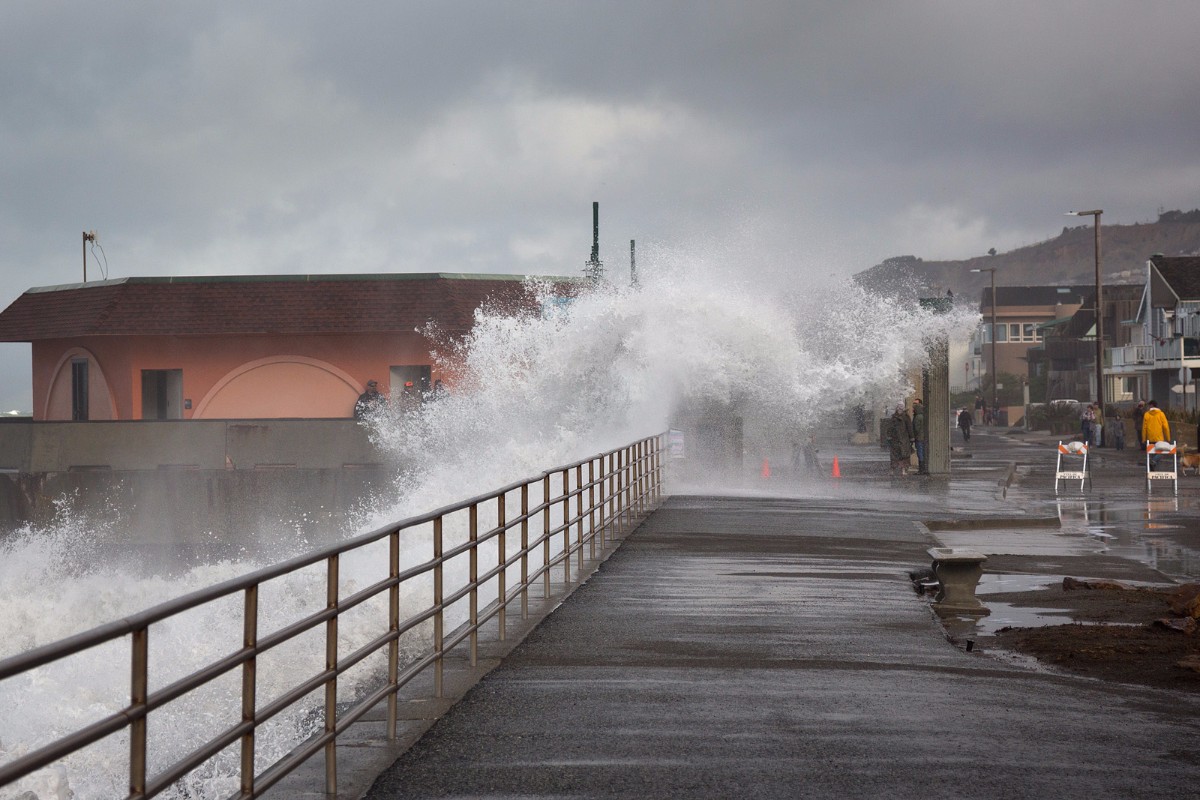 Photo Courtesy: Alan Grinberg on Flickr
Photo Courtesy: Alan Grinberg on Flickr
Sea Level Rise: Southern California
Climate scientists agree that climate change-induced sea level rise could threaten coastal communities and irreparably damage United States’ coasts. For coastal states like California, a rise in sea level equates to the destruction of property and beaches essential to the economy. However, the implications of projected sea level rise are far broader than a decrease in tourism – infrastructure, businesses, and homes will all be threatened. Damages from flooding and storms are already costing the government in increased expenditures. The United States should develop contingency plans to be able to implement cogent disaster response strategies.
California’s beaches are a crucial feature of the state’s economy. In 2013, the ocean economy contributed more than $44 billion to California’s gross domestic product and generated over 500,000 jobs with more than $19 billion in wages and salaries. Consequently, sectors such as tourism, recreation, transportation, ship and boat building, offshore minerals, construction, and living resources are all vulnerable to sea level rise. A new study from the U.S. Geological Survey found that sea level rise could flood up to 67 percent of Southern California beaches by 2100 as climate change will cause oceans to rise up to 6.6 feet. This increase in sea level will have a clear impact on local human and economic security. In addition to the economic implications, as many as 25 million residents living near the Californian coastline could be displaced, clearly undermining local stability and security.
Los Angeles County, the state’s largest ocean economy benefactor, is executing short-term plans aimed at protecting beach structures. Its Coastal Regional Sediment Management Plan intends to resolve coastal erosion and to preserve shorelines. The plan implements various beach projects, including construction of sand retention structures, acquisition and development of public facilities, and diligent maintenance. However, the natural sediment supply in the region is limited. Therefore, the county should prioritize preservation of existing resources to ensure long-term adaptability and cogent strategy.
California is not alone – rising sea level is a growing threat to all coastal communities, including Florida and Louisiana, among others. As ocean water flow increases and moves inland, many drainage pipes and streets are flooded while drinking-water wells become contaminated. Jennifer Jurado, Chief Resilience Officer for Broward County, Florida, asserts that, “These are not examples of future risk but are realities today.”
States cannot deal with these issues on their own. The federal government and federal agencies must work with states to respond holistically to climate change threats. Contingency plans, policy recommendations, and adaptation initiatives are all needed to address projected sea level rise and ensure the United States’ national security.
Furthermore, citizens who inhabit coastal communities in the United States should have the opportunity to participate in decision-making and in the implementation of disaster response strategies in conjunction with local officials when addressing the threat of rising sea levels. With the community’s participation, officials can receive better information about endangered areas, increase public interest, and ensure a clear and rapid response to the community’s priority needs, which demonstrates the local government’s integrity and leadership efforts.
The reality of climate change is with us today – it is a new reality of rising sea levels, unstable climate patterns, droughts, and extreme storms. To mitigate the effects of unstable economies, water scarcity, food insecurity, and social crises, we need to act prudently and base our actions on scientific evidence and data. The threats of climate change cannot be overlooked.






